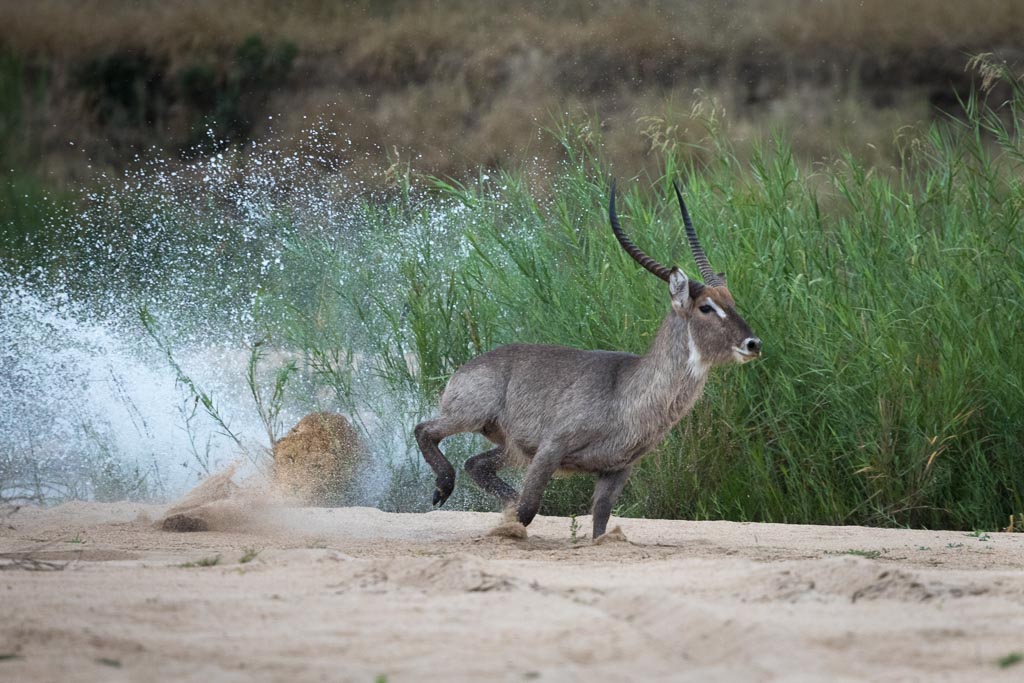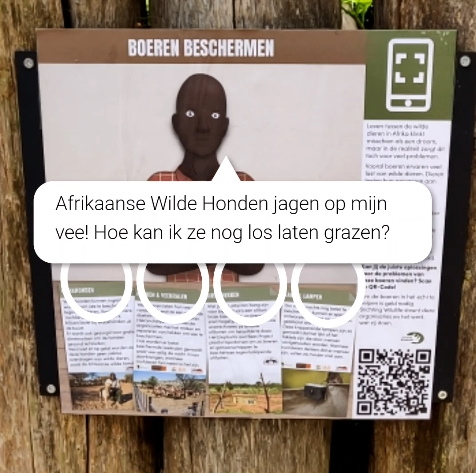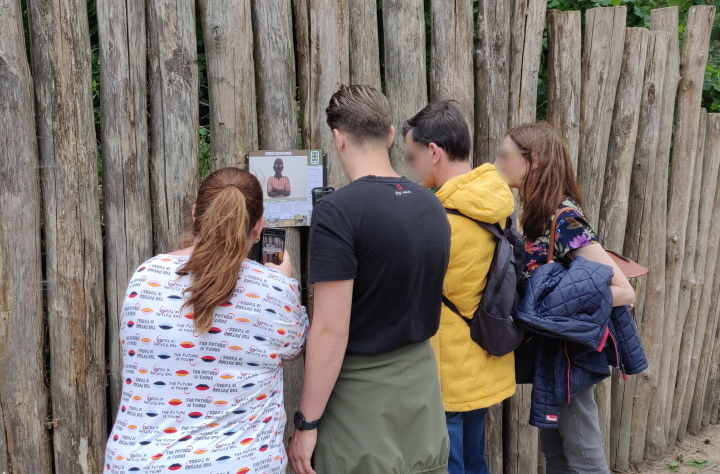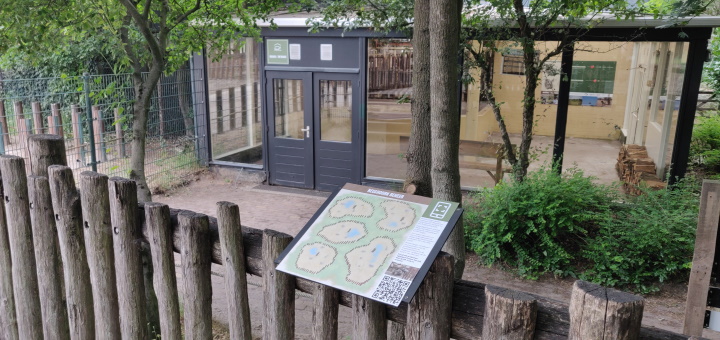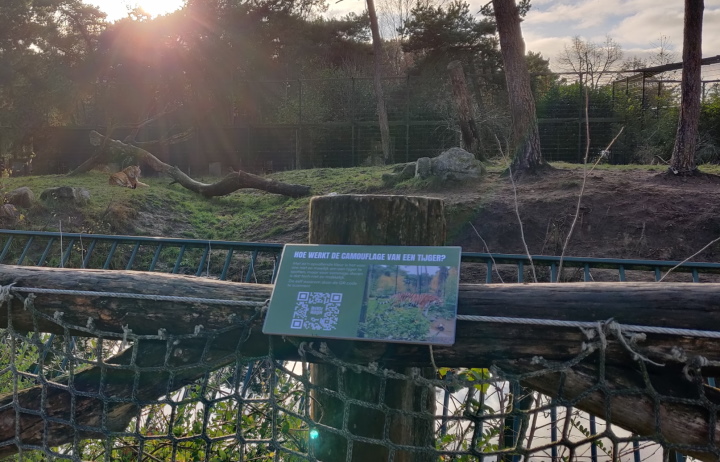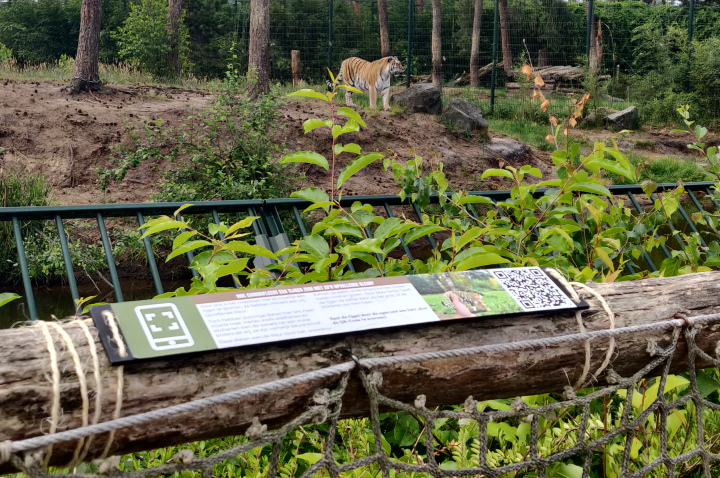Waterbuck Escape X
This is one of the less serious experiences, being the most game-like by far.
It came from a desire to have more varied interaction types, wanting to do something with the phone's gyro-sensor. This was a perfect fit for a game about chasing an animal, which the waterbuck was a fun fit for, and perhaps slightly more original than a predator chasing its prey.
This experience took some balancing to get right. Originally it had the player play the game twice, once with and once without the circle on the waterbuck's behind.
The idea was that you would be able to tell it's more difficult without the circle, However, the difference was negligible and only made the game unnecessarily long, therefore this part was scrapped.
